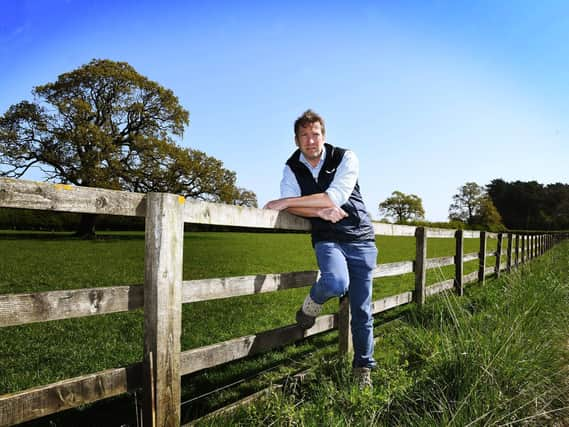Surgery on a cow is all in a day's work for Julian Norton


The first-time calver had not been right since she had delivered her calf and a colleague had been to examine her. The tell-tale pinging, just like a small stone being thrown at a metal bucket, heard down the stethoscope when the upper left side of the abdomen was flicked confirmed the diagnosis of a left displaced abomasum.
This is a fairly common problem in cows soon after calving. When the large uterus, until recently full of calf, placenta and fluid, is suddenly empty there is a lot of spare space in the abdominal cavity. If the cow doesn’t start eating immediately, the fourth stomach can move and become trapped between the body wall and the huge rumen on the left. Further periods of poor appetite render it gassy, so it floats higher and becomes even more trapped.
Advertisement
Hide AdAdvertisement
Hide AdLuckily, an observant farmer spots the problem, suspects the diagnosis and calls the vet. An eagle-eared vet hears the ping and swaps the stethoscope for the scalpel. Or sends for a colleague to come with his scalpel, which is what happened this time – I was summoned to do the good bit.
The surgery is very satisfying, often with instant results. The aim is to manipulate the abnormal abomasum back to its correct position and suture it in place so it doesn’t float away again, like tethering a boat.
There are a multitude of surgical options, but one of my favourites is to have two vets, one on each side of the patient, who stands patiently while first one vet, then the other feeds an arm inside the cow, passing the abomasum across the abdomen via a suture in its muscular wall.
This is pushed into the waiting fingers of the second vet after a brief, abdominal handshake. It’s simple and effective, but has the downside of needing two incisions and also two vets in the same place at the same time, which is often a challenge.
Advertisement
Hide AdAdvertisement
Hide AdAnother method involves just one vet. The cow is rolled onto her back, so the gas filled abomasum floats back to approximately the correct position, whereupon it is fixed in place. It has the advantage of simplicity, but cows so not usually like lying upside down, so there is a concomitant struggle, with stray bovine feet flying in unpredictable directions, a great risk to vets and helpers.
A third technique, that is currently in favour, is the one I employed on this afternoon’s cow. It has the advantage of needing only one vet and one incision. I made that incision on the right side of the abdomen, then reached in and across, past the rumen to find the gas-filled abomasum hiding behind it. With some difficulty, I squeezed the gas out so that I could pull the abomasum back to its correct place.
There is a piece of fat, attached to it that acts as a very useful landmark and a handy tab to grab and suture. It’s called the lesser omentum, or more affectionately the “sow’s ear”, because that is what it looks like. When this appears at the incision, I know I’ve got the right bit. I swiftly attached the sow’s ear to the inside of the cow and, 40 minutes after I’d started, I was washing blood from my arm and the cow was walking back to the field. I hung around to watch her progress.
“I know what you’re waiting for,” said the farmer, impressed in an understated way at the simplicity of the technique. “It’ll make your day if she puts her head down and takes a mouthful of grass.”
Advertisement
Hide AdAdvertisement
Hide AdSupport The Yorkshire Post and become a subscriber today.
Your subscription will help us to continue to bring quality news to the people of Yorkshire. In return, you'll see fewer ads on site, get free access to our app and receive exclusive members-only offers.
So, please - if you can - pay for our work. Just £5 per month is the starting point. If you think that which we are trying to achieve is worth more, you can pay us what you think we are worth. By doing so, you will be investing in something that is becoming increasingly rare. Independent journalism that cares less about right and left and more about right and wrong. Journalism you can trust.
Thank you
James Mitchinson
Comment Guidelines
National World encourages reader discussion on our stories. User feedback, insights and back-and-forth exchanges add a rich layer of context to reporting. Please review our Community Guidelines before commenting.